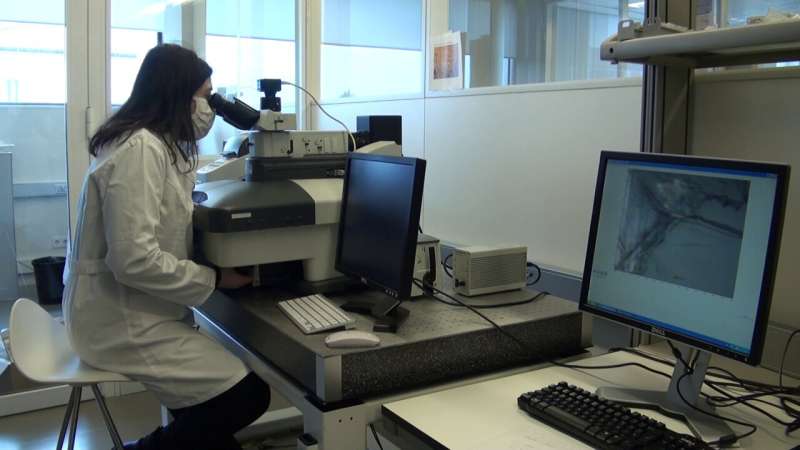Archaeometry Lab. Credit: CENIEH
The Centro Nacional de Investigación sobre la Evolución Humana (CENIEH) has participated in a paper published in the journal Applied Clay Science, assessing the influence of the laboratory preparations in climatic and paleoclimatic studies that use isotopes. The results show that the preparation is an important process that, on certain occasions, could lead to modification of the initial isotopic ratios.
The CENIEH Geology and Archaeometry laboratories collaborated on the preparations and analyzed the mineralogy to understand the isotopic content of the authigenic clays used to investigate paleoenvironments. Authigenic clays are minerals commonly present in sediments and soils that are found in archaeopaleontological sites and other Quaternary media, and they can hold isotopes whose ratios offer information about the environmental conditions under which they formed.
Nevertheless, isolating the isotopes is a laborious process requiring numerous preparations and treatments, such as aqueous solutions and acid attacks, which can contaminate or alter the initial isotopic composition.
The authors analyzed the possible influence of the composition of the water used in these preparations when it comes to determining the isotopic composition of the hydrogen. To do this, they used samples from a geological survey carried out in the region of Afar (Ethiopia) and from the Sierra de Atapuerca sites (Gran Dolina, Burgos), diverse laboratory treatments, and two types of water with different hydrogen abundance.
More information: I. Campaña et al, Assessing the influence of isotopic composition of water on that of clay minerals during chemical treatments, Applied Clay Science (2022). DOI: 10.1016/j.clay.2022.106495
Provided by CENIEH























